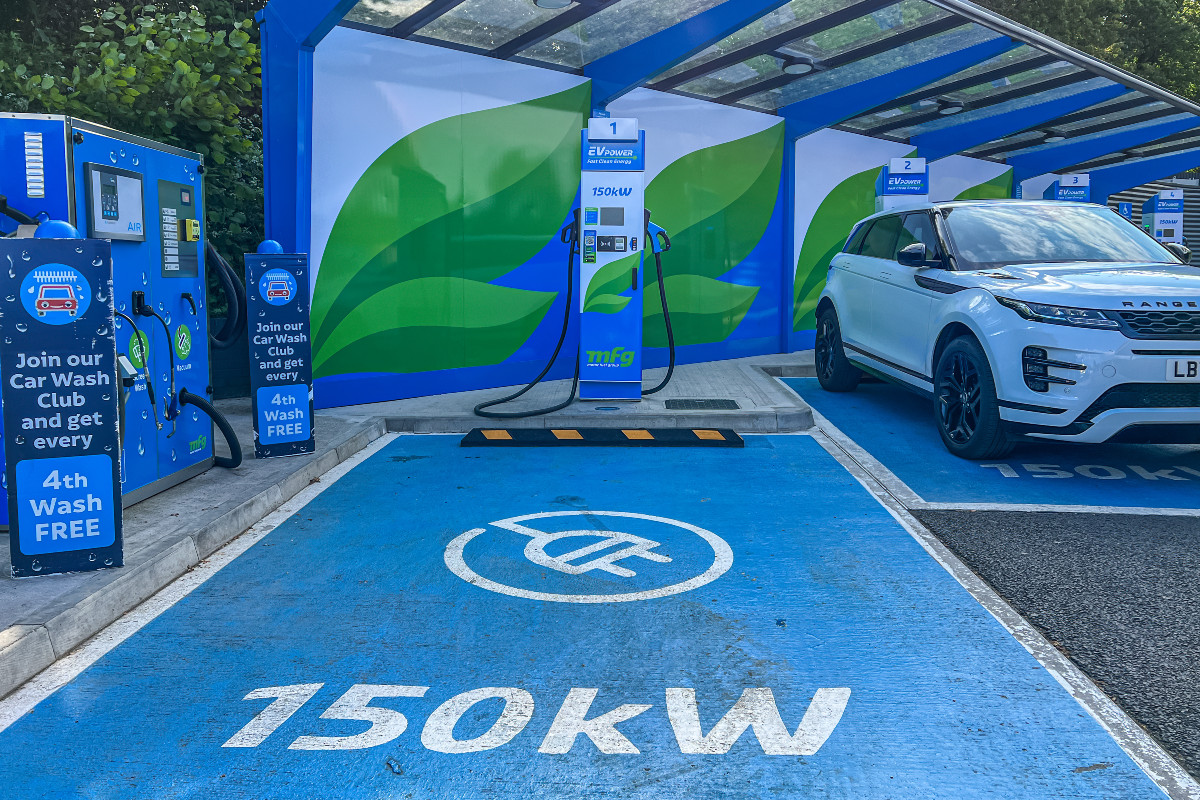The roll-out of public EV chargers gathered pace in the first half of 2025, with 8,670 new charge points bringing the UK’s total to 82,369 devices at 40,479 locations.
According to Zapmap, installations between January and June saw a year-on-year increase of 27%, keeping the industry on course for the Government’s target of 300,000 chargers by 2030.
The rise of ultra-rapid chargers
While much of the network has been long dominated by destination chargers, as well as slightly faster ‘rapid’ chargers, ultra-rapid chargers are now more commonplace than they once were. Gone are the days where an EV charging network provider will opt to install 50 kW chargers, with ultra-rapid devices, meaning 150 kW+, growing by almost 23% to 8,619.
In fact, for the first time ever, ultra-rapid chargers now outnumber traditional rapids. While charging hubs, which are defined as sites that host six or more rapid or ultra-rapid chargers, have similarly exploded in popularity – with the UK now home to 673 of these hubs, an increase of 136 between January and June this year.
Destination charging spreads throughout the UK
Of course, lower-powered AC units still make up the bulk of the network, accounting for just under 80% of all devices. Their numbers rose to 65,671, fuelled in part by the Government’s Local Electric Vehicle Infrastructure (LEVI) scheme. On-street chargers – which are seen as vital for the 40% of households without off-street parking – saw 3,709 additions, taking the total to 29,227. Although Greater London remains the hotspot, the rest of the UK posted a 25% rise versus London’s 11%, evidence that regional funding is beginning to have an impact.
The North East led regional growth with a 40% year-on-year uplift across all power ratings, closely followed by the East of England (39%) and West Midlands (38%). Nine of the UK’s 12 regions now host more than 1,200 rapid or ultra-rapid devices, while six regions exceed 1,500.
Jade Edwards, Head of Insights at Zapmap, commented on the figures, “The EV landscape at the mid-point of 2025 looks significantly different to six months ago, in terms of the shape of the infrastructure, EV demand and availability and the legislative landscape. We’re always pleased to see strong growth in en-route charging and hubs, not just because they are so convenient for EV drivers on long journeys, but also because they provide high-visibility and help instil confidence for drivers looking to make the switch.
“Meanwhile, we’re now beginning to see LEVI funding awards feeding through the system, offering the 40% of people who do not have access to off-street parking increased opportunities to charge close to home and benefit from driving electric.
“We look forward to seeing what further measures the government can introduce to make access to public charging more equitable.”
Vicky Read, CEO at ChargeUK, added, “This sustained growth gives confidence to drivers that the network they need is there for them and will encourage even more to make the switch. With 29% growth across the whole market, the sector remains on track for the Government’s ambition of 300,000 chargers by 2030.
“It’s particularly encouraging to see growth accelerating outside of the South East, with the North East, East of England and West Midlands seeing significant increases, as well as the continued rise in the number of high-profile and high-powered hubs to support en-route charging.
“To keep the roll out on track, and to ensure drivers have access to affordable charging, the Government can support the sector by equalising VAT on public charging to five per cent, addressing the rise in standing charges, and extending the Renewable Transport Fuel Obligation to include EV charging.”

